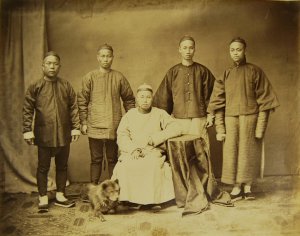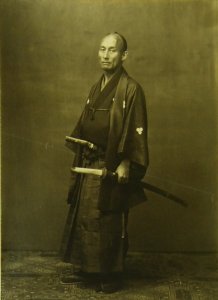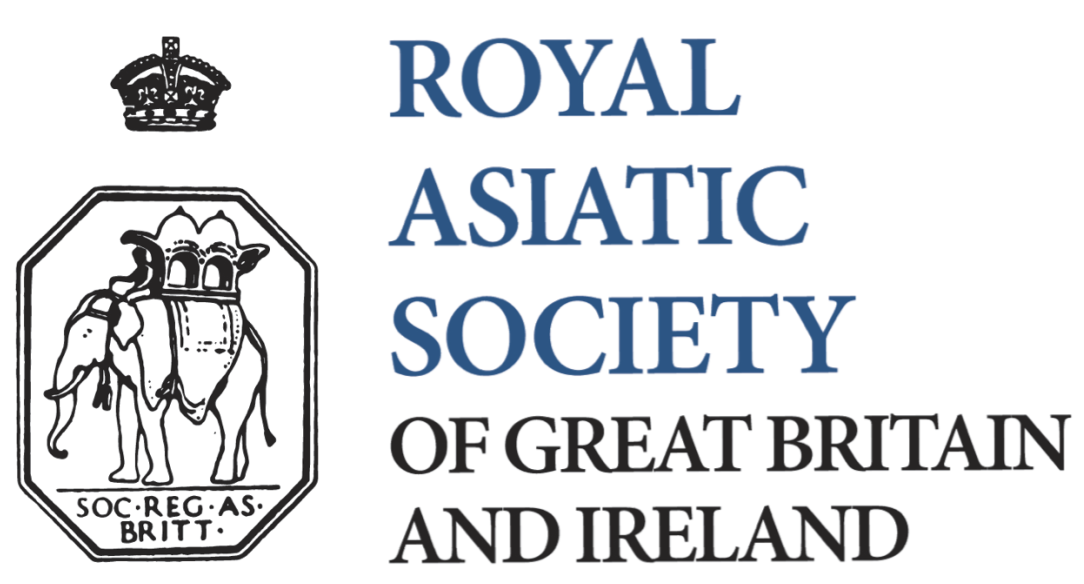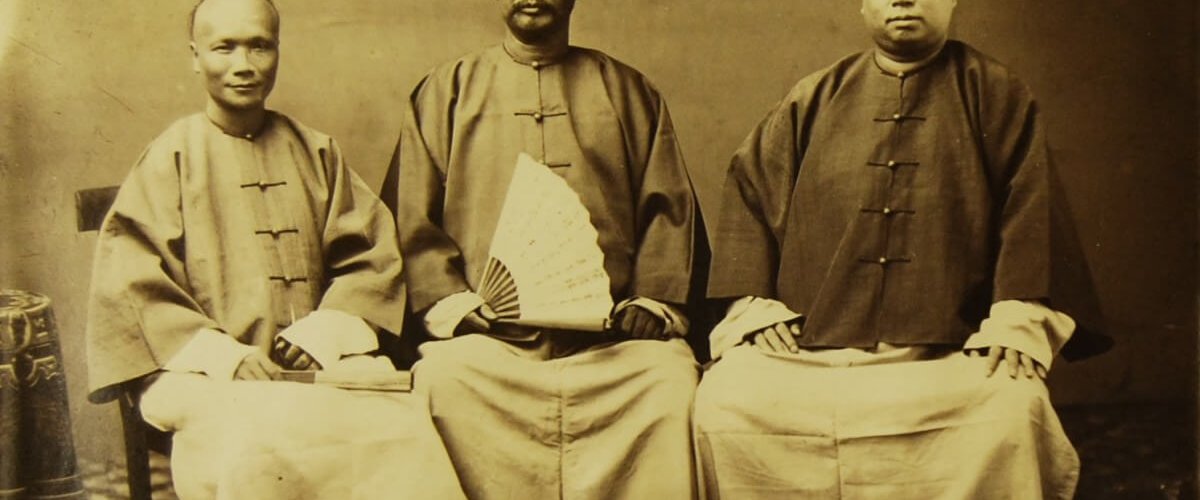Latest Special Edition of the Journal now Available
The latest edition of the Journal of the Royal Asiatic Society is now available. All members of the Society have access to it online by logging into our website and then navigating to the Journal page. From here access is possible to all volumes of the Journal via Cambridge University Press. If you are not yet a member you can still access the Journal via the Cambridge University Press website, some articles being available at a cost and some are open access.
The guest editors for this issue of the Journal are Hailian Chen from the Faculty of East Asian Studies, Ruhr-University Bochum, Germany, and Naofumi Nakamura from the Institute of Social Science, The University of Tokyo, Japan. In their editorial they explain how the issue came into being:

Trading locomotives between the USA and Japan: Okura & Co. at the beginning of the twentieth century by Naofumi Nakamura. This article examines international transactions related to steam locomotives at the beginning of the twentieth century while focusing on Japanese trading companies. In particular, it considers in detail how Japanese trading companies acquired the knowledge and know-how of locomotive trading to carry out their business transactions through a case study of Okura & Co.’s New York branch office. The analysis highlights the following three factors that supported Okura’s locomotive trade in New York: first, the company took advantage of business opportunities by collecting information through networks of Japanese contacts in New York and local experts; second, it utilised social and technological infrastructure, including international communication lines, transportation, and financial systems, as key fundamentals of its overseas activities; third, a former oyatoi (hired foreigner) played a critical role as its consulting engineer.
Seeking employment during Japan’s early industrialisation: new engineering graduates and their struggles before 1900 by Masanori Wada (College of Liberal Arts and Sciences, Mie University, Japan). This article examines the social background of engineers in Meiji Japan by analysing their employment-seeking activities and their role in fostering industrial development. In particular, it focuses on the graduates from the Imperial College of Engineering (ICE) in Tokyo. One of the most prestigious schools for technical education, the ICE was established by the Meiji government in 1871 and opened in 1873. In traditional Japanese society, the handicraft manufacturing sector was held in low regard. The difficulties that graduates faced while the industry was still developing serve as a stark reminder of the widespread contempt and disdain for manufacturing that existed in Japan before the new profession of engineer gained traction.
Institutionalising global mining knowledge: the rise of engineering education in late Qing China, 1870–95 by Hailian Chen. Through the lens of institutionalising global mining knowledge, this article addresses the following questions: How did the demand for expertise within the framework of mining bureaucracy evolve under the impact of Western imperialism? How did mining education enter scholarly discourse and become eventually institutionalised in the late Qing China? Drawing on evidence from the collections of Sheng Xuanhuai’s archive series, it investigates two previously overlooked ‘failures’ of Sheng’s mining-related enterprises, namely his earliest mining practices in Hubei in the 1870s and his proposal for establishing a mining school in Shandong in 1888–89. It then reconnects these efforts with the histories of Western learning, late Qing mining bureaucracy, the monetary crisis of that era, and the global recruitment of engineers despite a pronounced distrust of foreign expertise.
Promoting standardisation in modern China: British and American engineers’ organisations, local Chinese engineers, and their transnational networks, 1901–41 by Lin-Chun Wu (Department of History, Taiwan Normal University, Taiwan). This article examines how Western standardisation practices were introduced, transmitted, and promoted in China during the first half of the twentieth century. In particular, it looks at the critical role played by British, American, and local Chinese engineers in the transmission process. Work examined includes that of the Engineering Society of China, led by British engineers, which initiated standardisation in the Shanghai International Settlement in the early twentieth century; that of the Association of Chinese and American Engineers, founded by engineers of China and the USA; and efforts in the 1930s under the Nanjing government to establish an ‘engineering’ or ‘technocratic’ state, which included the execution of national schemes for the development of industrial standardisation.

Mobilising human resources to build a national communications network: the case of Japan before the Pacific War by Janet Hunter (Economic History Department, London School of Economics and Political Science, UK). This article analyses labour-intensive workforce strategies in Japan’s government-run informational infrastructure (post, telegraph, and telephone) and in the adjunct services associated with their administration in the decades up to the Pacific War. It asks to what extent the growing scale of employment in Japan’s communications infrastructure in this period confirms the existence of labour-intensive growth outside the manufacturing sector, and how far the growth of the labour force in post and telecommunications was facilitated by specific labour-absorbing institutions. The article also seeks to establish how far the evolving institutions were closely associated with the improvement in the quality of labour and its ability to interact with rapidly changing needs and technologies.
Divergent tracks: Korean Government Railways’ employment and training systems under Japanese colonial rule, 1910–45 by Chaisung Lim (College of Economics, Rikkyo University, Tokyo, Japan). This study employs annual reports, time-series statistics, and internal training records of the colonial-era Korean Government Railways (KGR) to conduct a quantitative analysis of its labour management practices. It addresses the colonial characteristics associated with Japanese techno-imperialism beyond ethnic discrimination, revealing a dual-pronged labour strategy that adopted a Japanese government employee system to manage middle- and upper-level personnel and directly recruited on-site workers for the lower echelons. This deviates from the low rates of local employment in Western colonies, particularly self-governing British territories or integrated French territories. In contrast, KGR’s employment practices demonstrated economic and ethnic inequalities. It predominantly made Koreans on-site labourers, whereas Japanese not only held similar roles, but also occupied upper- and middle-management positions.

Though the photographs I have inserted into this blog post are generally from an earlier period than that analysed in the articles, they all are connected with governance and business in East Asia. They are examples from a large collection of more than 400 photos collated by Alfred Howell of Alfred, Wilkinson & Co., Shanghai. These were donated to the Society by his son, E.B. Howell, on 29 March 1939. These contain many scenes from the period 1860-1869 from which western interaction within East Asia can be examined. They are all available for viewing within our Reading Room.
~ ~ ~ ~ ~
We have enjoyed several lectures and book launches in the last couple of weeks which will be reported in a future blog post. This coming week, on Thursday 24 October, 6.30 pm, sees the book launch for Goderdzi Chokheli’s Human Sadness with talks by Professor Dan Healey, Ms Lia Chokoshvili, founder of the Oxford Georgian Translation Project, and Translators. Human Sadness (original title Adamianta Sevda, 1984) is set in the harsh mountain world of Soviet Georgia. The story is narrated by five different voices, each of which has been translated by a different member of the Oxford Georgian Translation Project in order to preserve its individuality. Lia and the translators will talk about the translation project and the key themes in the novel. All are welcome to attend. If you wish to hear the lecture online, please contact Matty Bradley (mb@royalasiaticsociety.org).

Nancy Charley, 18 October 2024. The featured image is of ‘Shopkeepers at Canton’ by M. Milton Miller, 1860-69, Photo.51/(264).

